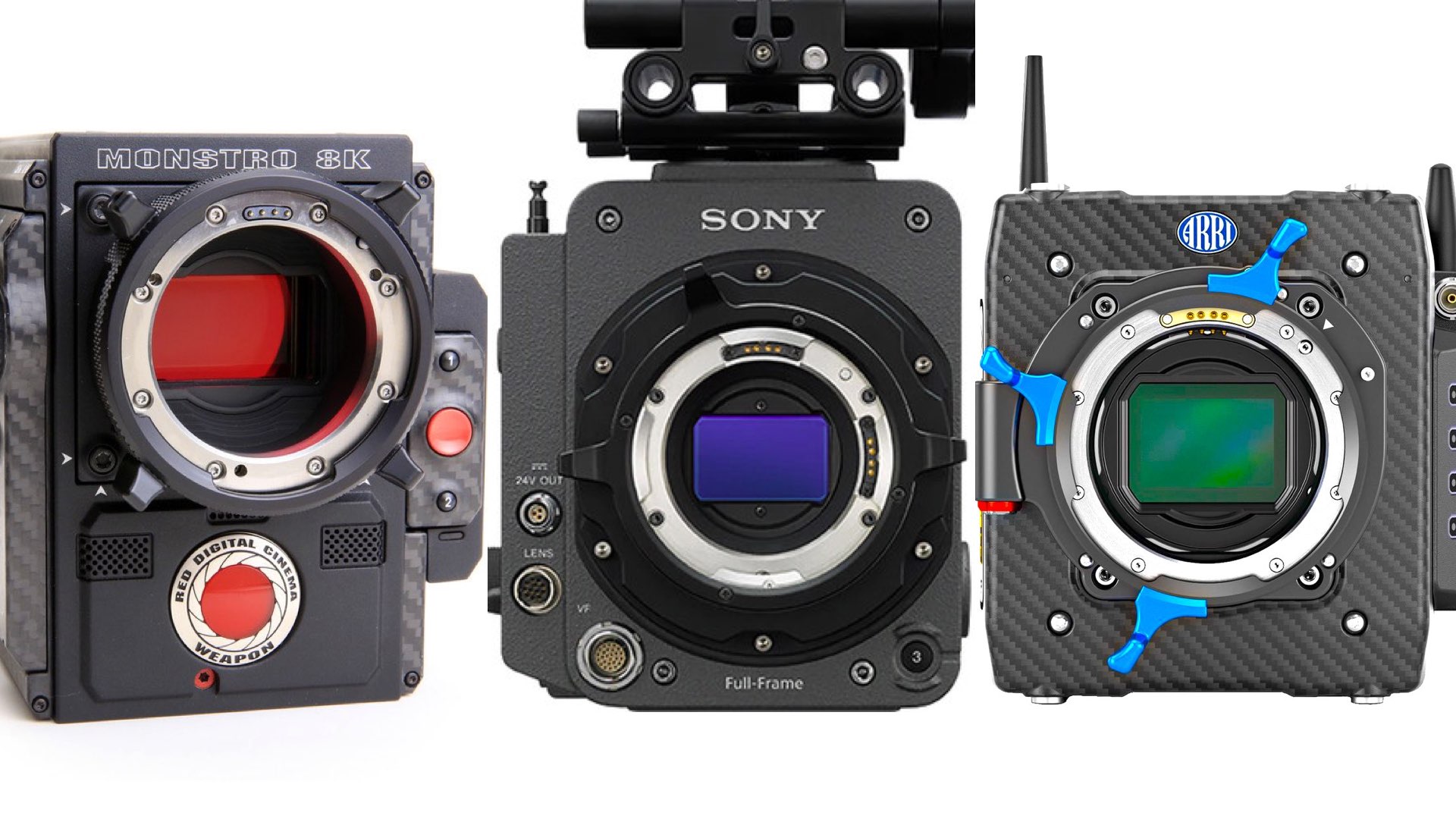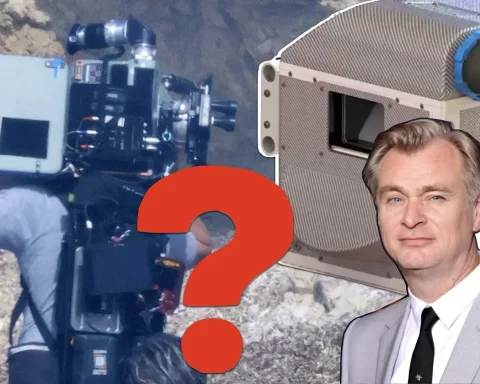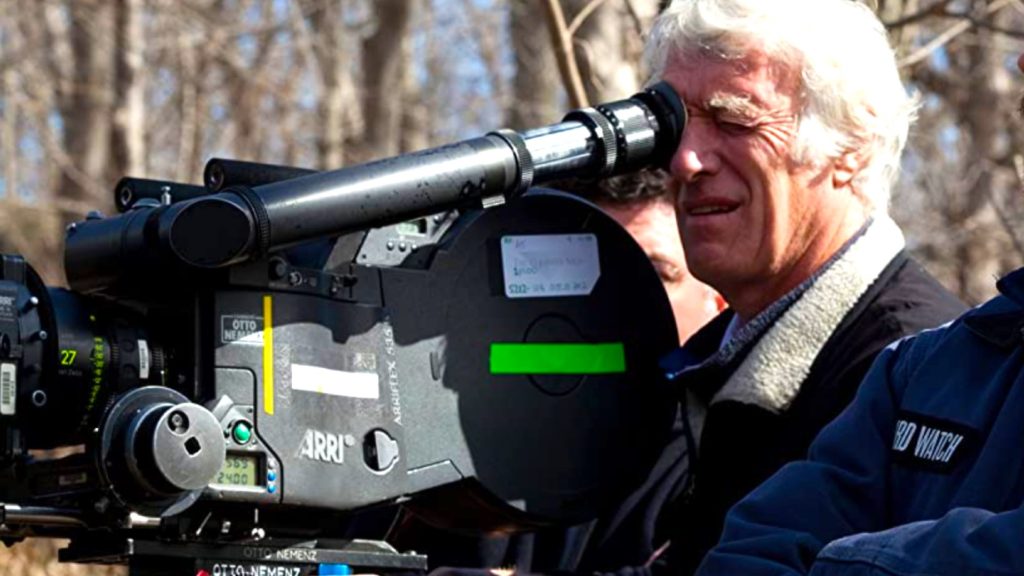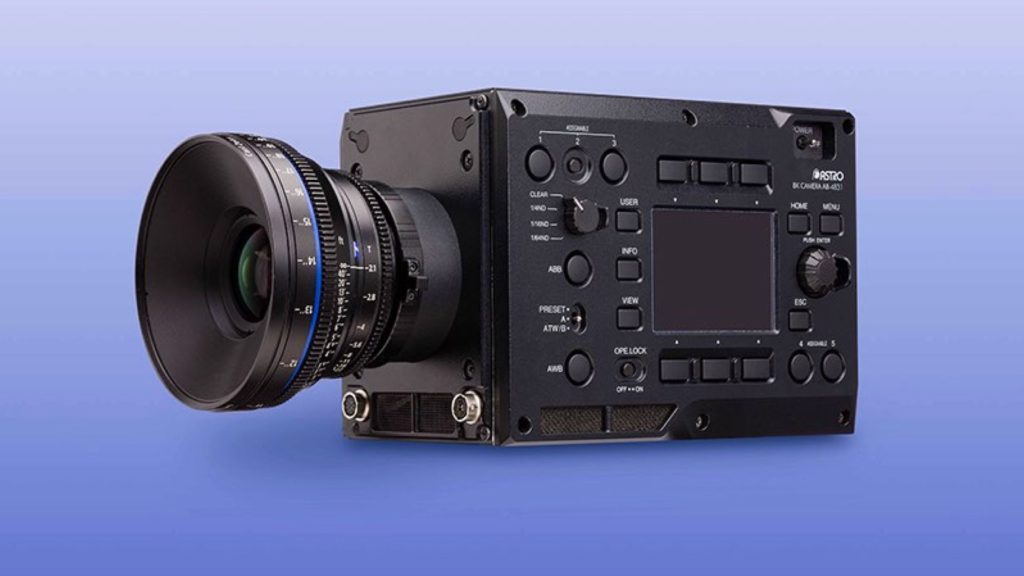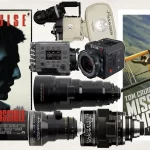2020 can be defined as the COVID year that paralyzed the film industry. On the other hand, cameras and lenses were produced in full capacity, by focusing to fulfill the need for the seekers of bigger sensors. Indeed, 2020 will be recognized as the year of the large format imagery. Explore the statistics below.
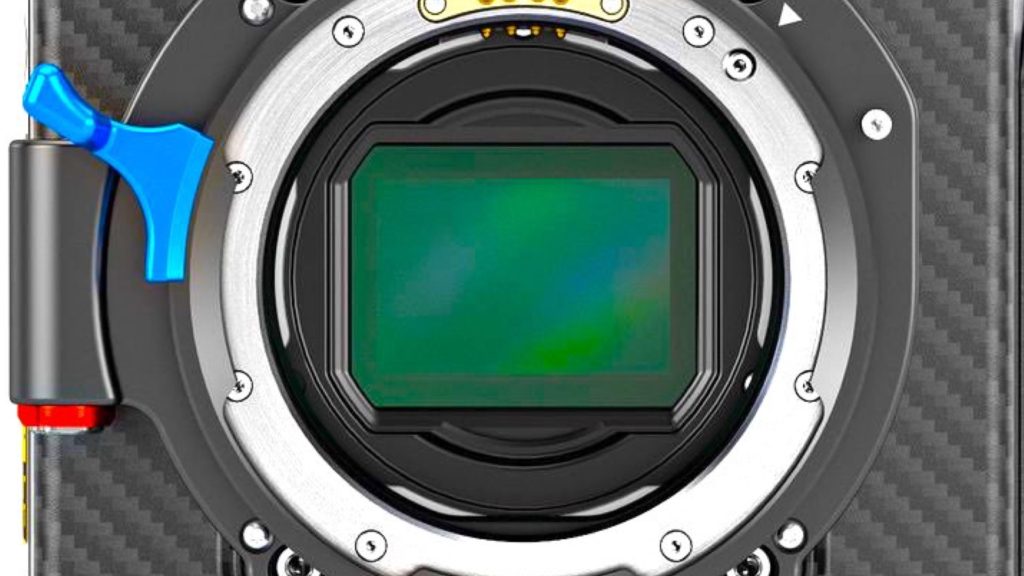
The rise of the large-format imagery
Large sensors were born a couple of years ago. RED has pushed the industry toward large digital sensor by creating the Monstro VV back in 2017. Although the DSMC2 Dragon 8K VV was developed in 2015, this very rare Dragon VV was used lately on Netflix’s The Dark Crystal. Anyway, the pursuit after the large format look was established many years earlier by using 65mm cameras like Panavision and IMAX, and was dedicated to delivering the best experience to meet the huge canvas standards (aka IMAX theaters). The thing is, that IMAX filmmaking demands vast discipline and…MONEY ($15,000 per week for rental, 3-minute film-run that costs about $1,000 and more). Thus, more “affordable” options were very welcome.
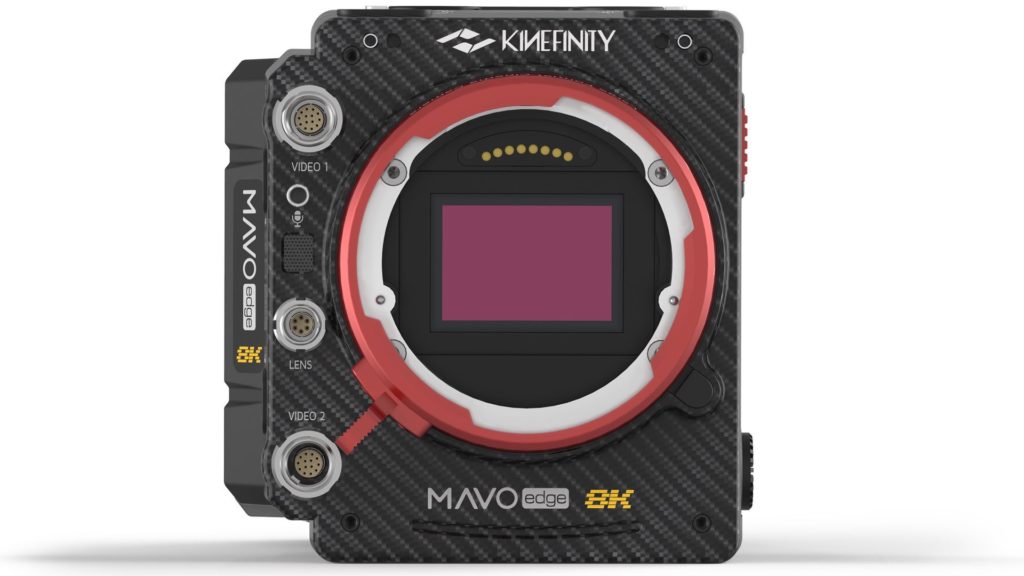
Large sensors for the masses
Camera manufacturers have been exploring the gap in the market for large format imagery. It’s important to emphasize that large sensors have many advantages comparing to Super 35 mm sensors (and disadvantages as well), beyond just shooting for the big screen. Nevertheless, it took some time for cinematographers to adapt for the new look of the large sensors as it’s very much different from the traditional look of the Super 35 mm. For instance, have a look at the charts below that show the cameras behind the selected high-ranked Netflix series. In 2018, the dominate format was definitely Super 35. However, the statistic slice of large format sensors has grown dramatically with the rise of ALEXA LF, VENICE, and Panavision DXL2.
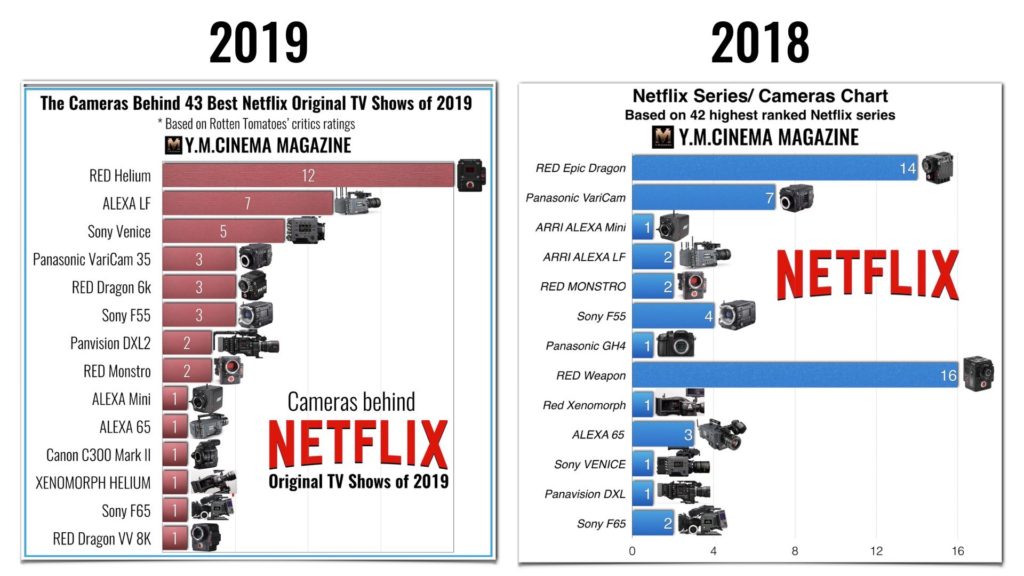
Oscar: The home for Super 35
In regard to the Academy Awards, film has been dominating for a long time. Film and Super 35 of course. Explore the chart below which shows the cameras behind Best Picture and Cinematography nominees. Besides a significant presence of film cameras (check out the diagram in the right side of the slide), we can see that Super 35 cameras are at the top.
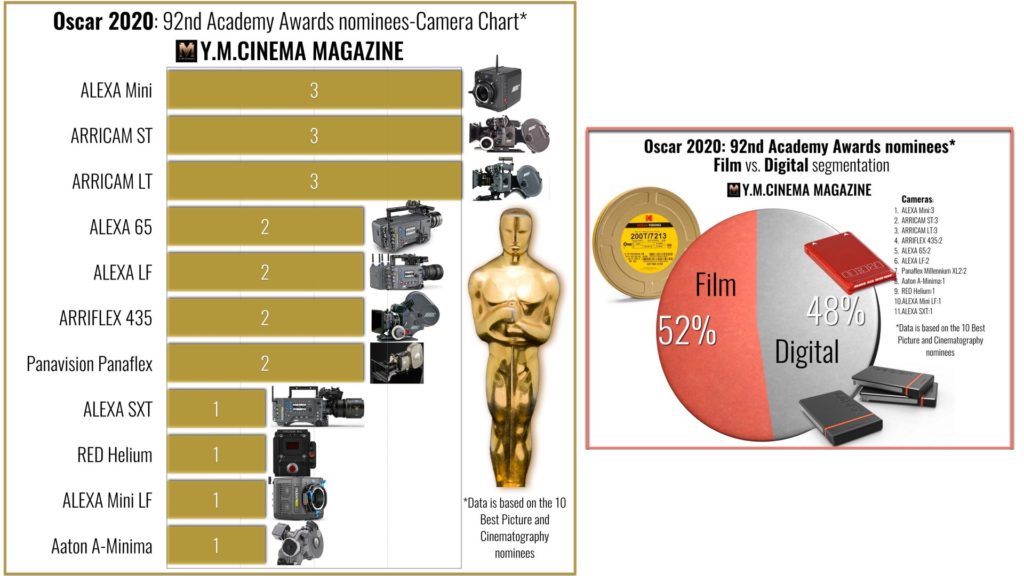
Furthermore, if we analyze the cameras used to shoot selected film for major festivals (aka Sundance), we can notice that those DPs (and directors) have chosen to shoot their films on Super 35. The reasons for that are obvious. Most of the time, those films have limited budget, and large format cameras are more expensive and demand more recourses in production and post. Explore the camera chart of Sundance 2020 below:
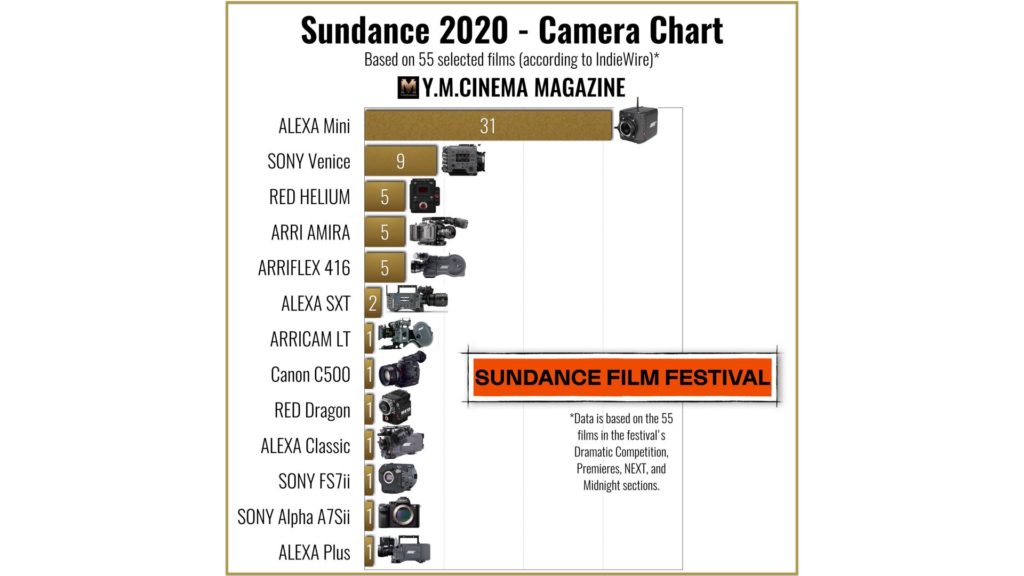
Oscar 2021: Large format wins
However, have a look at the comparison below of two charts which demonstrate the cameras used to shoot selected (top-rated and nominees predictions) for the Academy Awards 2020 and 2021. The ALEXA LF, 65, Mini LF, and Sony VENICE helped to break the glass ceiling of large format. Furthermore, we can notice other large sensor film cameras like the Panavision, IMAX, and surprisingly ARRI 765. This data tells us that DPs have started seeking the large format imagery over the very known Super 35.
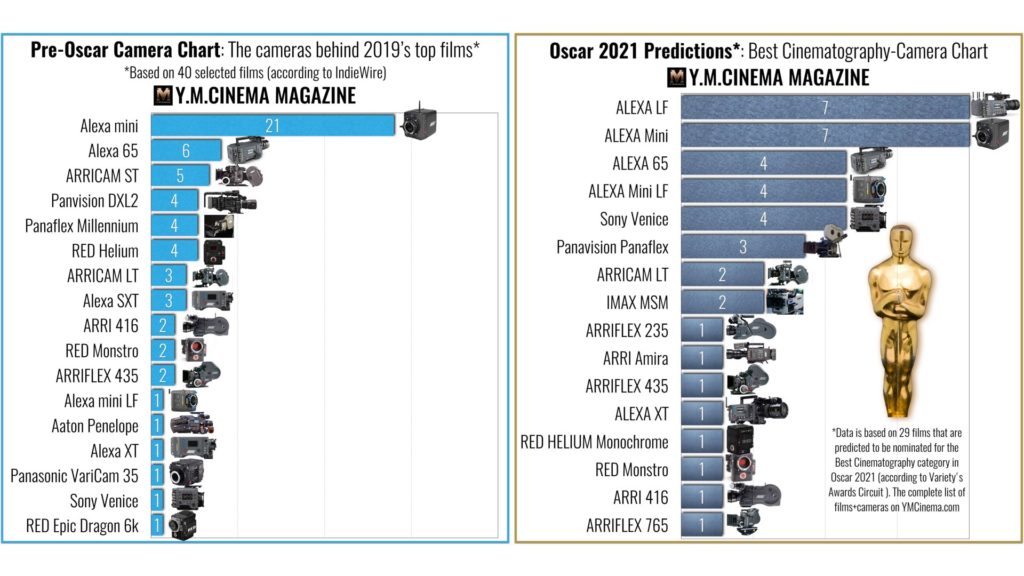
Final insights
Please excuse me for writing so technical. It doesn’t mean that large sensor cameras are better than Super 35, because they are not! I’ve got tremendous respect for the traditional look of Super 35 and for me, it’s much more cinematic than large format. Super 35 indicates the power and magic of cinema. In fact, ARRI is developing their new ALEXA 4K Super 35 as we speak, as stated by ARRI: “We at ARRI believe in Super 35. Not everybody will shoot Large Format/Full Frame. Many productions, in particular in TV, will remain with Super 35 for the foreseeable future. Therefore, we are also working on a dedicated Super 35 4K camera (not LF), further increasing the choices for cinematographers”. On the other hand, the next DSMC3 models of RED Digital Cinema might be focused on the large sensors. The cinematic differences between Super 35 and large sensors are very noticeable. Nonetheless, it’s just another pathway for telling your story.
What is your preferred cinematic format? Super 35mm or beyond? Comment below.
References:
These are articles from our site, however, there’re plenty more. Just head over to ymcinema.com and search for Large Format and/or Large Sensors.
- Pre-Oscar Camera Chart: Panavision, RED and Tons of ALEXA
- The Cameras Behind Oscar 2021: ARRI LF, Panaflex, VENICE, HELIUM Monochrome, and a lot of Film.
- The Cameras Behind Sundance 2020: ALEXA Mini, SONY Venice, and RED Helium
- The Cameras Behind Oscar 2020: Film Made a Comeback and RED Enters the List
- Large Format Look Shootout: ARRI Alexa 65 vs. ARRI Alexa Mini
- ARRI Confirms the ALEXA Super 35 4K to be Launched in 2021
- Netflix’s The Dark Crystal was Shot on Specially Modified RED Cameras With Cooke Anamorphic/i Lenses
- IMAX Filmmaking: What is it like to Shoot on an IMAX Film Camera?

